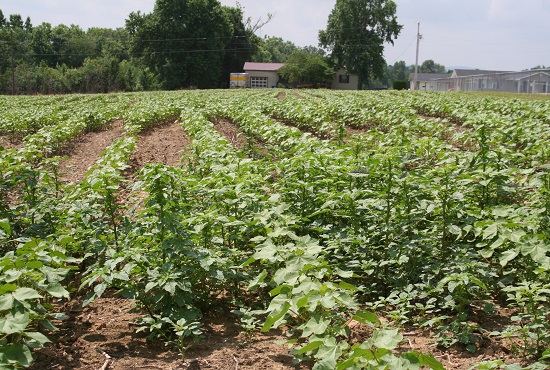Plexus: Cotton Market Becomes a Raging Bull
Plexus
The initial stage of this potent ally that started last week was fueled by trade short covering, after traders used the dip two weeks ago to reduce their net-short exposure. According to the latest CFTC report, the trade had cut its net short position from 9.2 million bales to 8.6 million bales as of August 9, and judging by the decline in December open interest, which dropped by about 9,000 contracts between July 28 and August 16, it continued to do so.
From a technical perspective, there were several developments that have encouraged speculators to approach the cotton market from the long side recently. Not only did the market penetrate through a downtrend line that started at 140.90 cents in early June, but in doing so it has been forming a “double bottom” reversal pattern. In addition to that we’ve had a crossover of the 7-day over the 21-day EMA (exponential moving average) Thursday, which is often used as an entry point for technical traders. This may explain why the cotton market was able to shrug off Friday’s horrendous performance in many of the outside markets, with global stocks caving in again and a number of commodities, such as oil and the grain complex, coming under heavy pressure.
What we don’t like about this recent rally is that it happened in relatively low volume and with open interest declining, with the exception of yesterday, when volume finally rose to nearly 20’000 contracts and open interest jumped. In order to have a sustained rally, we need to see both of these measures expand. At the moment the jury is still out as to whether the market will be able to transition into a bullish pattern or not, because it has yet to take out the August 2nd high of 108.62 cents. If the market fails to do so over the next few sessions, any upside momentum is likely to going to fizzle and instead of beginning a new leg up, we may simply transition into a sideways range, which would more accurately reflect what we see in the physical market at the moment.
Although the physical market has improved somewhat and mills, who have been sitting on their hands for quite some time, will eventually need to step in and buy additional supplies, they will do so without any great sense of urgency. The way crops around the globe have been developing up to this point, there should be enough cotton available to accommodate the current level of demand. What is getting traders a bit nervous is the quality aspect, especially in the U.S., where a high percentage of the crop has already been committed. Texas, which traditionally produces a lot of the U.S. high grades for export, is having a tough year, with its crop potential being slashed in half and heat stress raising serious concerns regarding the quality of the cotton that has survived. Other parts of the cotton belt may experience some quality problems as well, since some fields have matured faster than normal due to the excessive heat. Also, a lot will depend on what kind of weather we’ll get at harvest. According to one prominent weather forecaster there is an 80% chance for an earlier and wetter than normal fall in the Northern Hemisphere, which could make things interesting.
Even though the cotton market has once again shown remarkable strength in the face of deteriorating outside markets today, it is not impermeable against these negative forces and we therefore need to brace ourselves for some weakness over the coming weeks and months. The U.S. is headed for a severe recession, although in reality it has probably never escaped the recession that began three years ago. The statistical recovery was simply created by massive amounts of money printing and stimulus packages, while the real economy has never gained any traction. What is most disconcerting as we are at this economic precipice is that unemployment is at over 9 percent, interest rates are near zero, Congress is focused on austerity measures rather than stimulus and the administration is missing in action. With Europe facing a similar scenario and even China and other Asian economies likely to slow down, it is difficult to keep an optimistic outlook going forward.
So where do we go from here? Trade short covering and renewed spec buying have given the market a boost over the last 5 sessions and positive momentum may lift prices even higher in the short term, but judging by what we see in the physical market and the global economy, we are not quite ready to jump on this bullish train. Unless there are additional crop problems, upside momentum is probably going to stall and values should drop back to around a dollar over the coming weeks. With the downside looking equally contained due to the issues with the U.S. crop this season, our best guess is that the market will be range bound in the foreseeable future.








